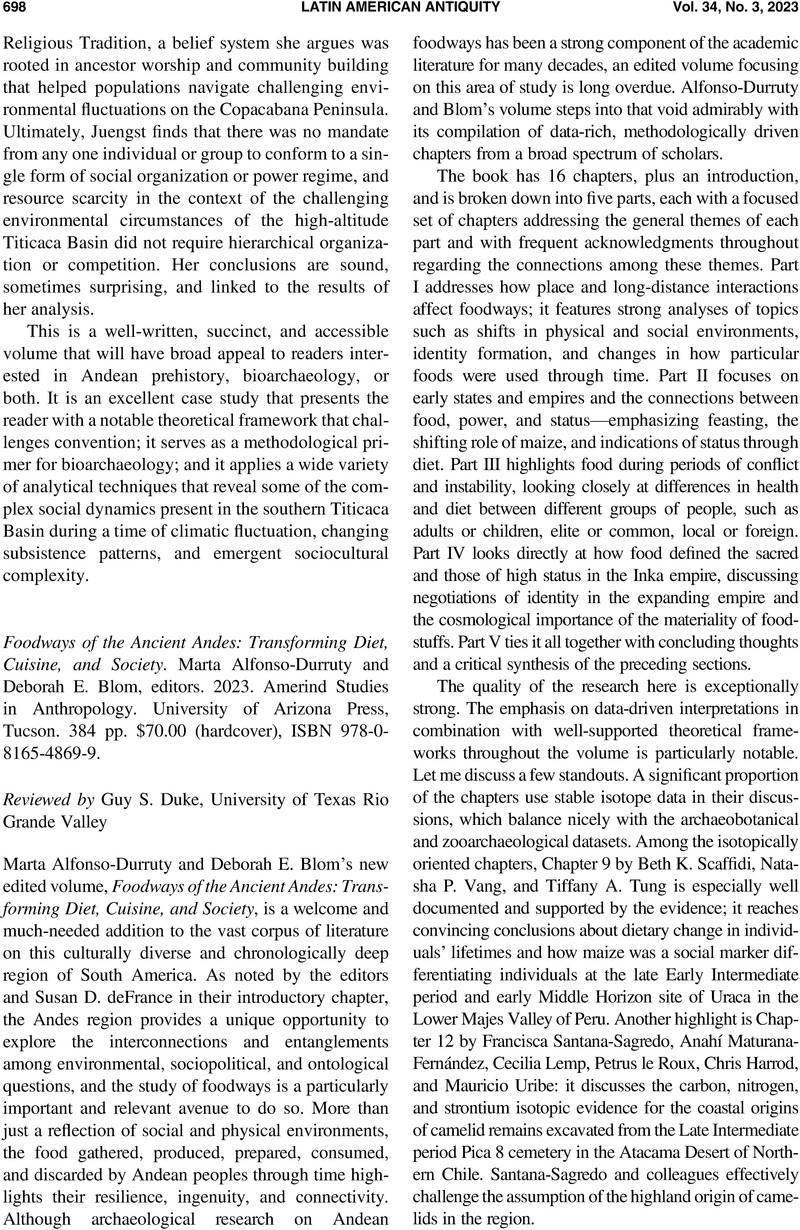No CrossRef data available.
Article contents
Foodways of the Ancient Andes: Transforming Diet, Cuisine, and Society. Marta Alfonso-Durruty and Deborah E. Blom, editors. 2023. Amerind Studies in Anthropology. University of Arizona Press, Tucson. 384 pp. $70.00 (hardcover), ISBN 978-0-8165-4869-9.
Review products
Foodways of the Ancient Andes: Transforming Diet, Cuisine, and Society. Marta Alfonso-Durruty and Deborah E. Blom, editors. 2023. Amerind Studies in Anthropology. University of Arizona Press, Tucson. 384 pp. $70.00 (hardcover), ISBN 978-0-8165-4869-9.
Published online by Cambridge University Press: 17 July 2023
Abstract
An abstract is not available for this content so a preview has been provided. Please use the Get access link above for information on how to access this content.

- Type
- Review
- Information
- Copyright
- Copyright © The Author(s), 2023. Published by Cambridge University Press on behalf of the Society for American Archaeology


